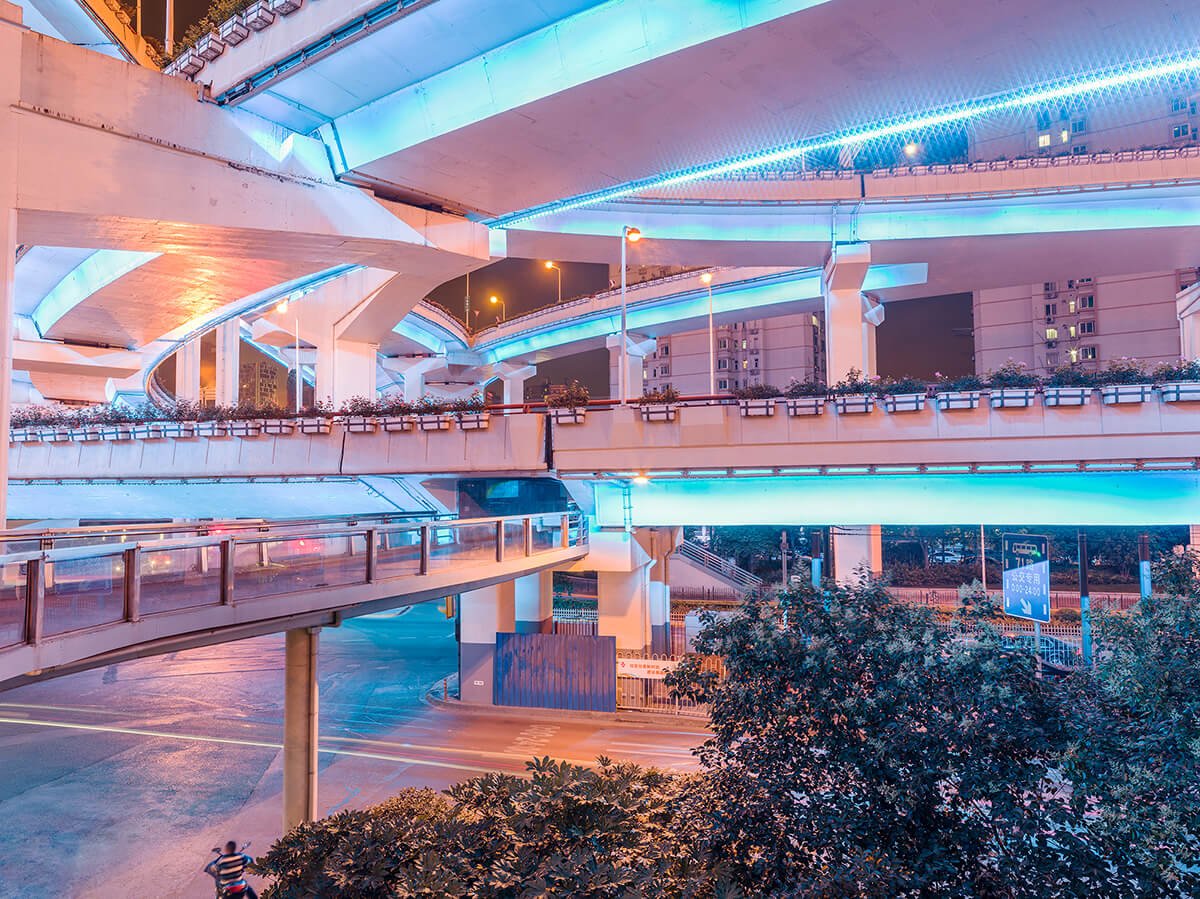INSPIRATION
My Favorite Shot
URBAN LIFE x MASS COLLECTIVE
What’s your favorite photo? We asked photographers from Mass Collective to share theirs…
Could you pick a favorite image you’ve taken? Not easy we know, but to coincide with our March 2021 URBAN LIFE call for entries, we asked some of the photographers from the brilliant Mass Collective to do just that. Or at least to pick a shot related to the topic of Urban Life that they hold dearly, were happy to have taken recently, or that resonates with them right now. Here they tell us why…
Mass is a collective of photographers documenting the built environment, that hosts online talks, in-person events and exhibitions that react to the evolving constructed landscape. Founded by photographers Henry Woide, Francesco Russo and Luca Piffaretti it was created as a space to socialise, share ideas and experiences between like-minded photographers.
Mass has worked with the London Festival of Architecture, Zoomed In festival and hosted its first virtual exhibition through the Mass Virtual Gallery. It plans to host more events and hold further group exhibitions with the photographers part of the Collective.
See more at www.mass-collective.com and @mass.collective
(Banner image: Andrew Meredith)
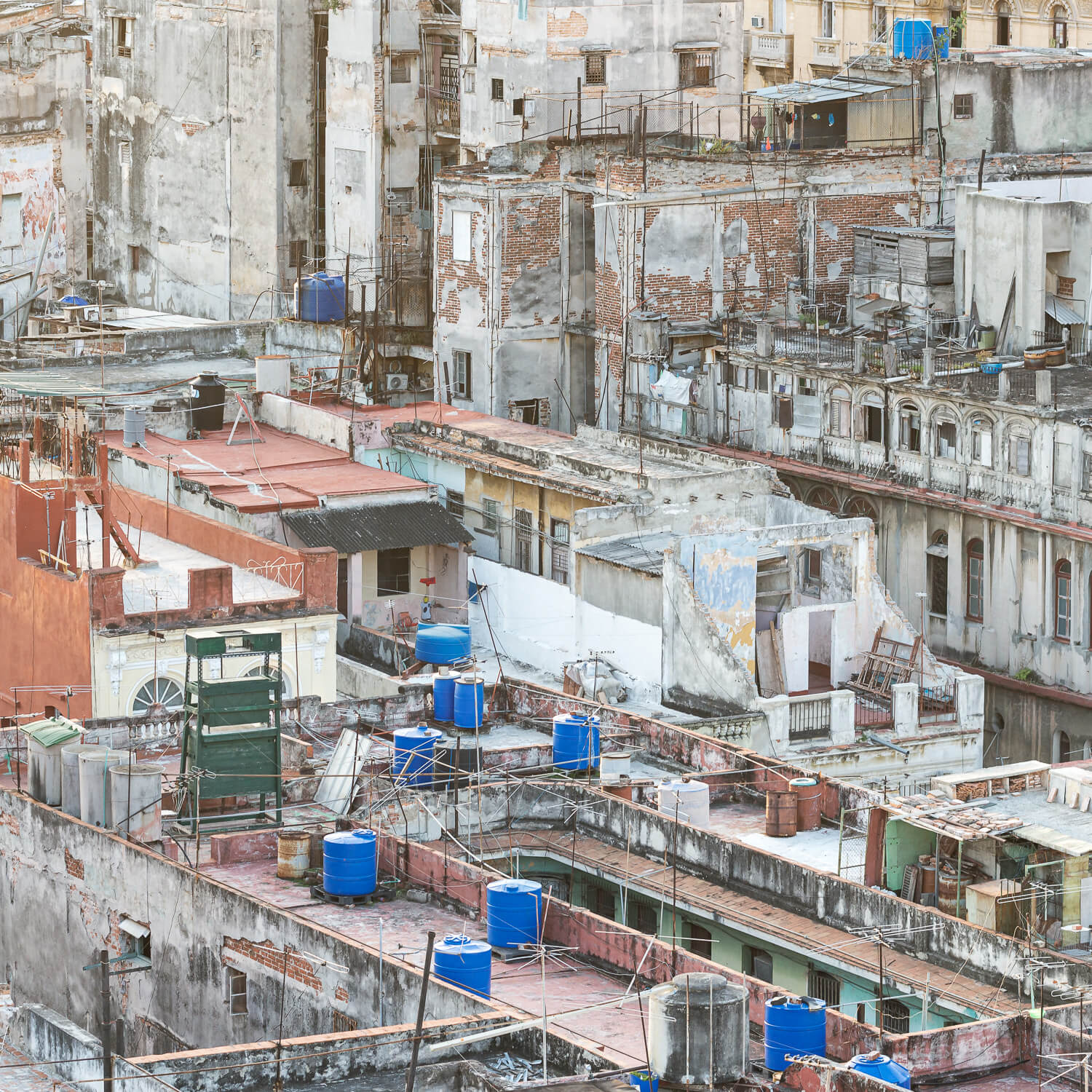
FRANCESCO RUSSO
www.francescorussophoto.com / @francescorussophoto
“When seen from one of the few vantage points, the apparently cluttered city of Havana unveils a pattern of decaying roofs that creates a lively rhythm. The residential blocks are punctuated by water tanks made of blue plastic, installed to store and supply water to the dwellings beneath. These are the only colourful elements in a warm and dusty cityscape.
Life in Havana flows mainly at street level, while on its roofs it shows the calm side of the city, the place where people, hang the clothes, relax and talk to the neighbours from the other roof terraces.”
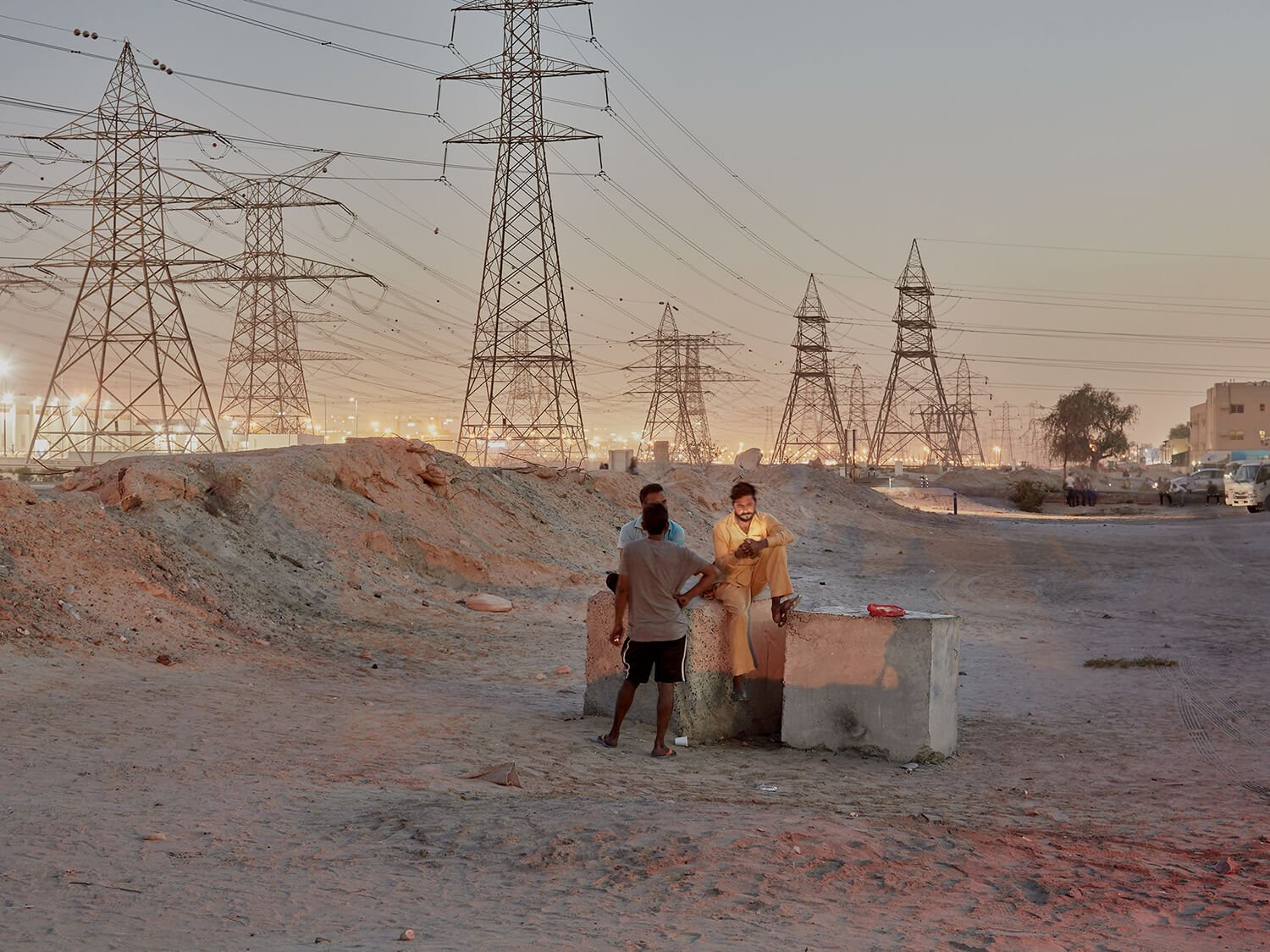
POLLY TOOTAL
www.pollytootal.com / @pollytootal
“From my series “The Hands That Built This City”. I show the complexity of living in the liminal space through photographs of men who live in labour camps in the UAE. The labourers, brought in to accommodate Dubai’s high volume of infrastructural development were enticed with a false promise of prosperity.
This image has a theatre-like quality as the artificial light illuminates the scene but it shows the reality of the dystopia that it’s contemporary society has created, where male-only communities live to work for the wealth and privilege of others. Set in this strange urban landscape of sand and pylons, it is an uncomfortable and beautiful dichotomy.”
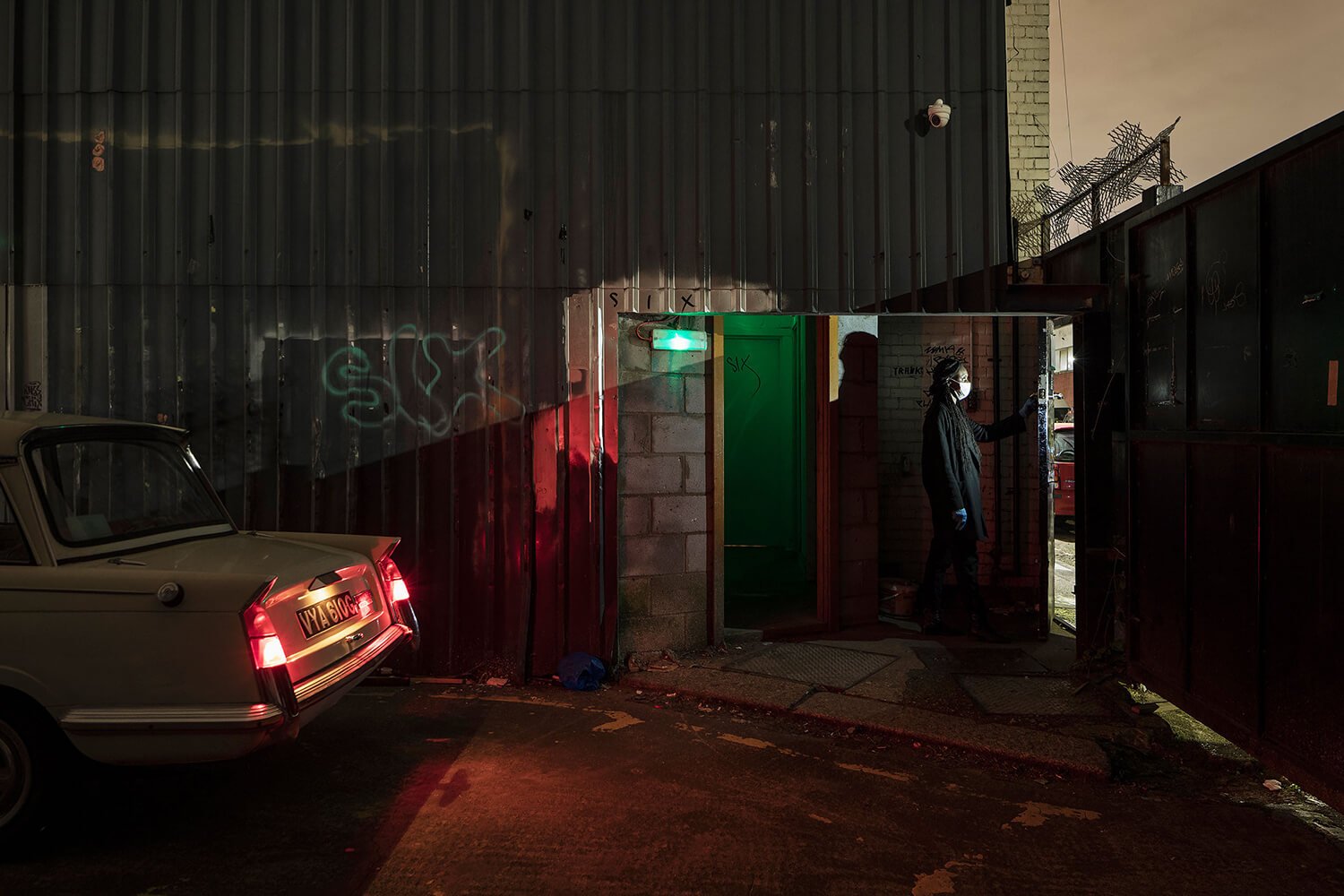
LUCA PIFFARETTI
www.lucapiffaretti.com / @lucap_photos
“Urban life as we knew it was completely revolutionised by the pandemic. Early into the first lockdown I decided to try and portray the anxiety that we all felt when we were deprived of the most basic freedoms of movement, a feeling made even stronger when living in seemingly deserted and unrecognisable cities. This picture of my girlfriend living our yard, the border with the “outside” world, is an emotional reminder of that period at a time where we can finally start to see the light at the end of the tunnel.”
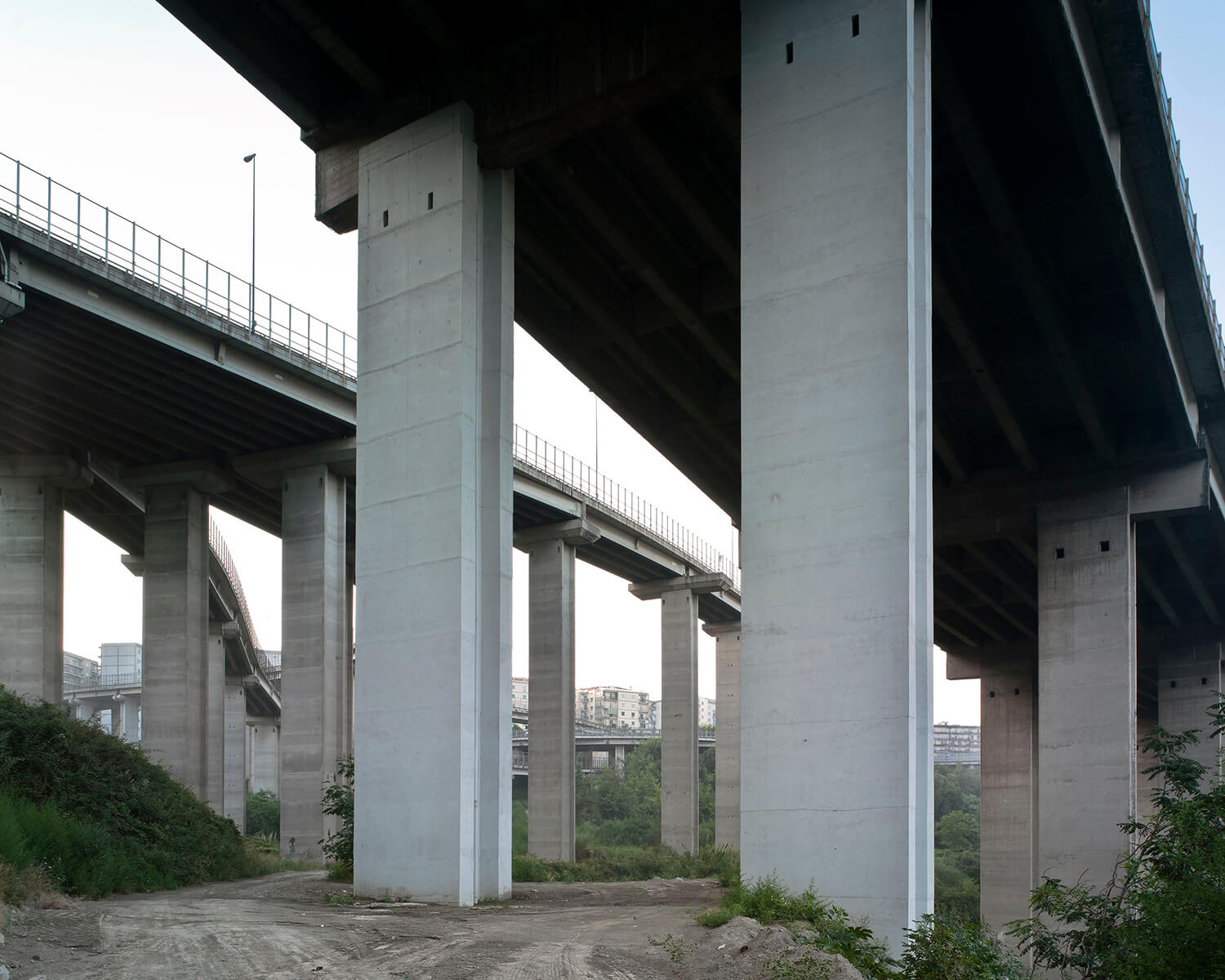
SUE BARR
www.architectureoftransit.com / @suebarr_foto
“Via Pigna, from the series “The Architecture of Transit”. This was one of last photographs I made during a long meandering road trip from Luzern to Napoli. I’d been researching the Autostrade infrastructures of Napoli as part of my PhD studies and had become obsessed by this particular junction, so was excited to finally be able to photograph it. But as we approached it appeared that the site was totally inaccessible and fenced off completely, but, this being Napoli nothing is ever quite how it first appears. So, after walking around the perimeter I luckily managed to find a large gap in the fence that was obviously the informal entrance to the area.
I always photograph very early in the morning when the southern Italian light is sharper and before the summer heat becomes oppressive. There are also less people around to see photographers carrying huge ladders and tripods through gaps in fences.
The photograph was composed to show the maximum number of concrete pilotti and intensify the enormity of the Autostrade that towers above like a roof over the city. The sprawling towerblocks can be seen in the distance, dwarfed by the forest of concrete in the foreground.
The photograph became emblematic of my PhD project; a culmination of the academic research I’d spent the previous years undertaking, but more importantly an image that celebrates the sublime beauty of these ignored architectural structures.”
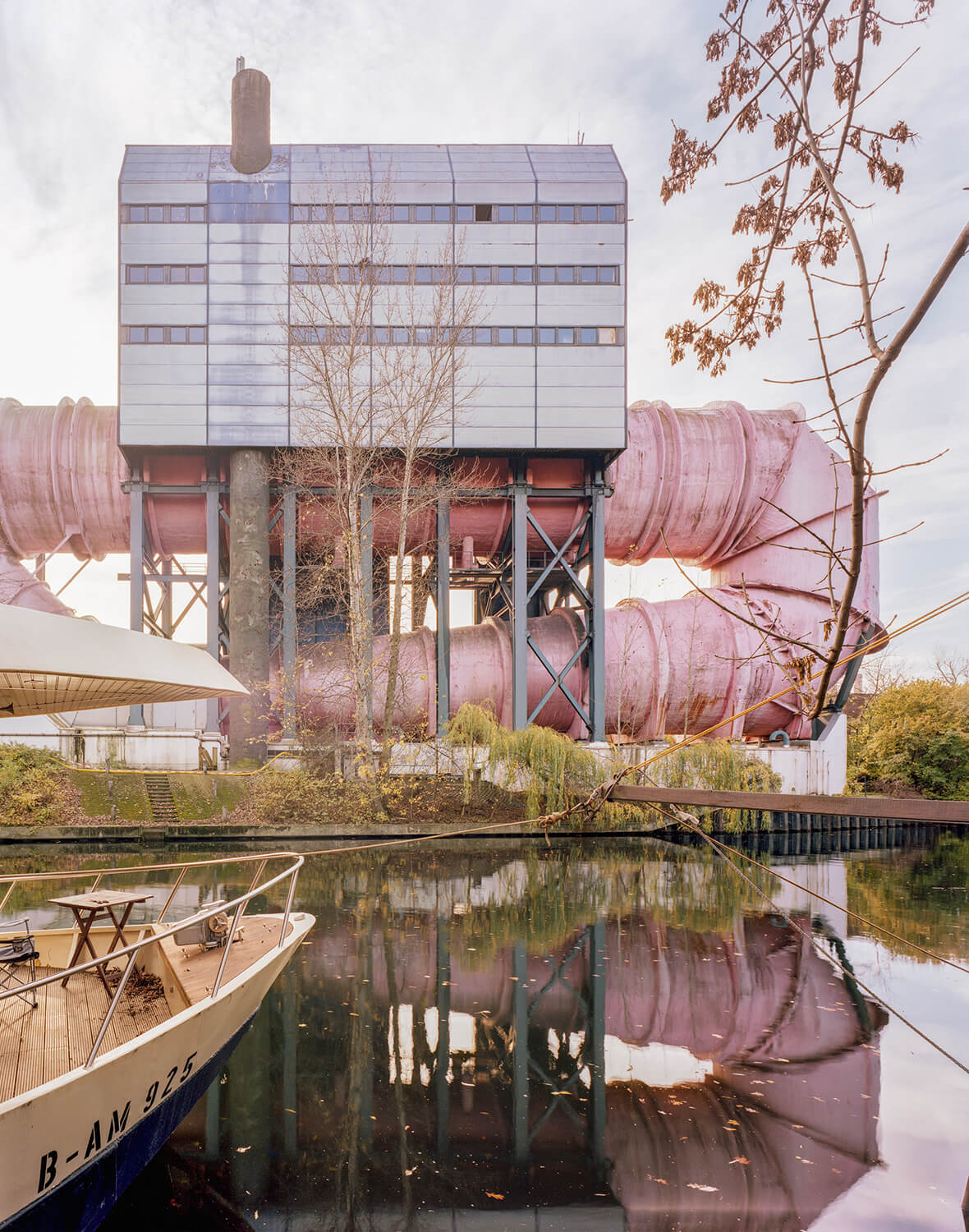
SIMON KENNEDY
www.simonkennedy.net / @_simonkennedy
“Shot in Berlin with a large format film camera, this is one of my all-time favourite images. It shows one of my favourite buildings designed by one of my favourite architects, Ludwig Leo, and although the light was tricky coming from behind the structure, the overall effect of the exposure worked well for me. The huge resolution of the 4×5” film captured some enjoyable details in the foreground, such as the pair of scissors on the table. For me the image shows a tranquil moment, with the boat and river and the evidence of life, which is in spite of the extraordinary, huge and almost alien structure looming behind. ”
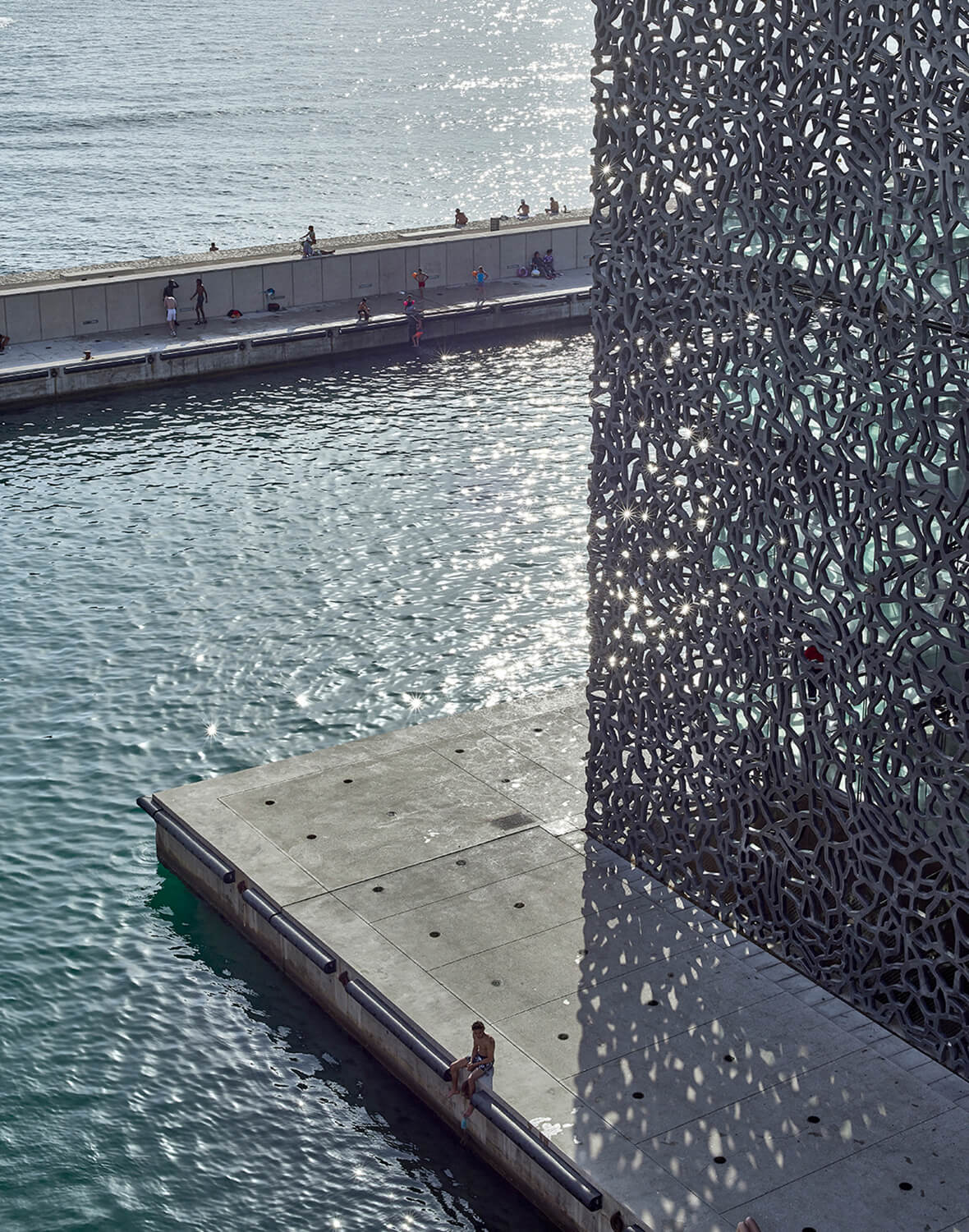
HENRY WOIDE
www.henrywoide.co.uk / @henrywoide
“Summer swimming in the bay of Marseille. Locals enjoy this spot for the harbour’s warm concrete and the cool dips in the ocean; the port of the Mucem acts as a concrete beach in the absence of sand, boats sailing in and out of its harbour.
I choose this image of the boy sitting alone on the harbour front, contemplative and alone, as I often find solace and peace by the seafront. Marseille is an eclectic mix of culture and architecture, and this image now acts as a memory of the city’s buzz.”
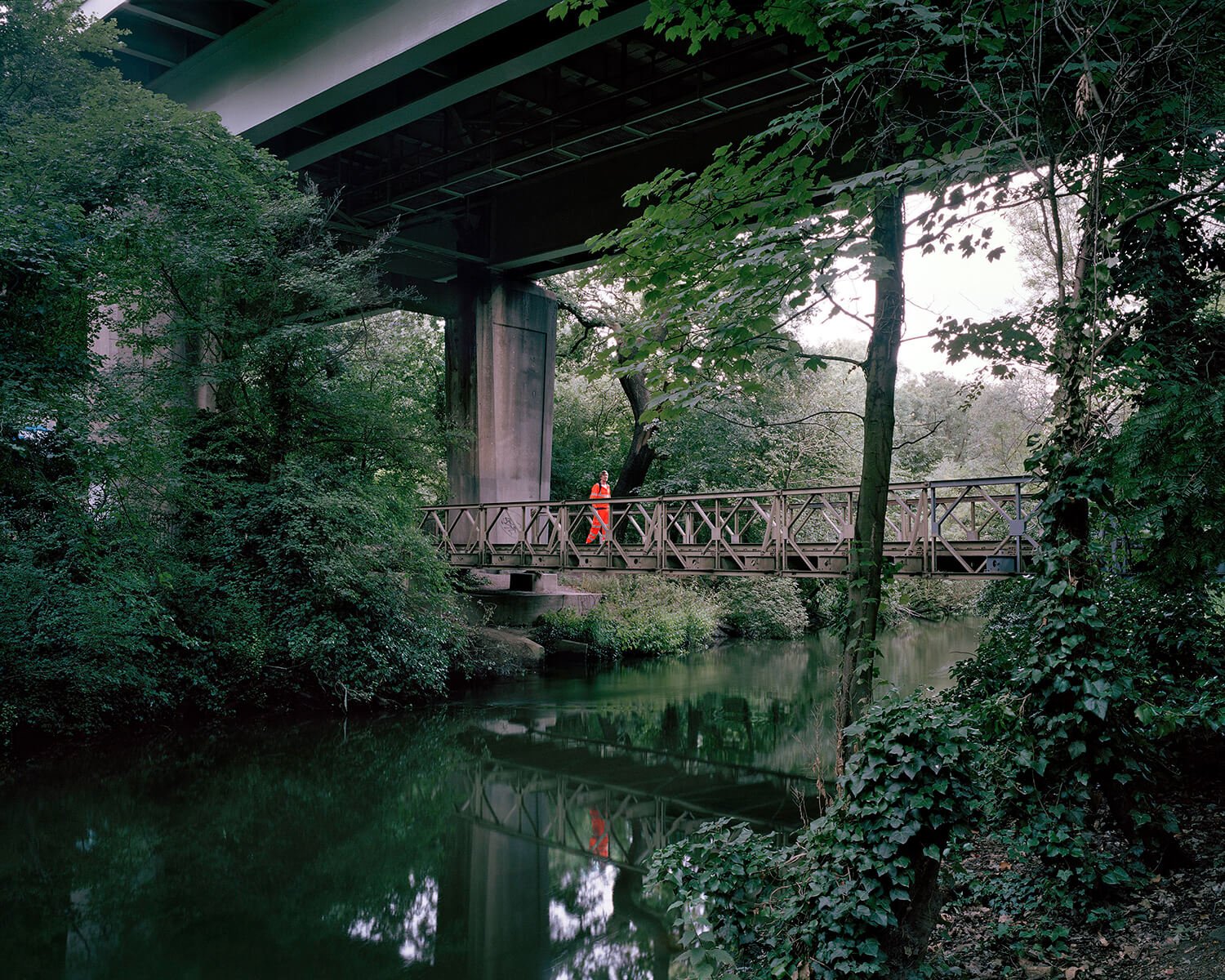
ANDREW MEREDITH
www.andrewmeredith.com / @andrewmeredithphoto
“During the first lockdown in 2020 I started a project mapping the life and infrastructure underneath the M4 motorway in West London, a stone’s throw from my house in Ealing. I had never had the chance to walk down there before. Amongst the dense concrete pillars is a river that meanders around woods, and walkways harmoniously, grey and green as far as the eye can see.
The significant restrictions of the lockdown didn’t seem to matter much when walking beneath the huge concrete elevated section of the major road. The womblike rumble of the noise above seemed to almost be a reassurance of the continuation of life given the troubling times we were all passing through.
People were walking around on their own processing the situation, you could see the troubles on some people’s faces, However, the feeling was mostly a positive one, the sun was out, and a chance to wander alone felt satisfying. Most were buoyant and almost excited at the prospect of a newfound feeling of freedom.”
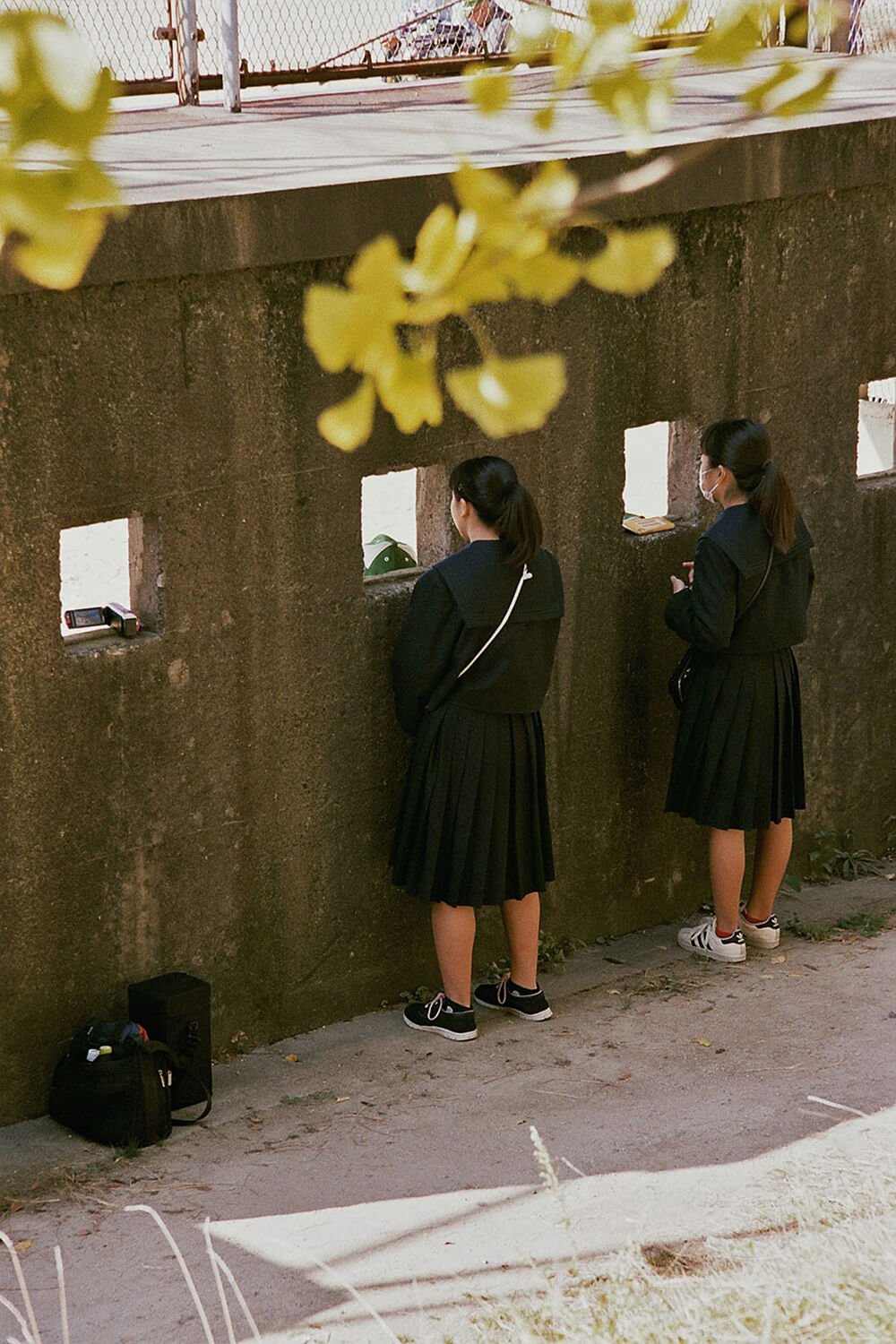
CAROLINE CHARREL
www.carolinecharrel.eu / @carolinecharrel
“On my way to Osaka castle, I stumbled on a baseball game. It presented me with something less grand than the tourist-centric parts of the city, something maybe closer to the daily life of young Osakans. I was struck by the way school uniforms here fed the wider aesthetic of the place. The sense of order they contributed to felt surreal within a metropolis. So did the gentle quietness of the scene. Only the presence of modern accessories ground us in the present moment.”
All images © the photographer
